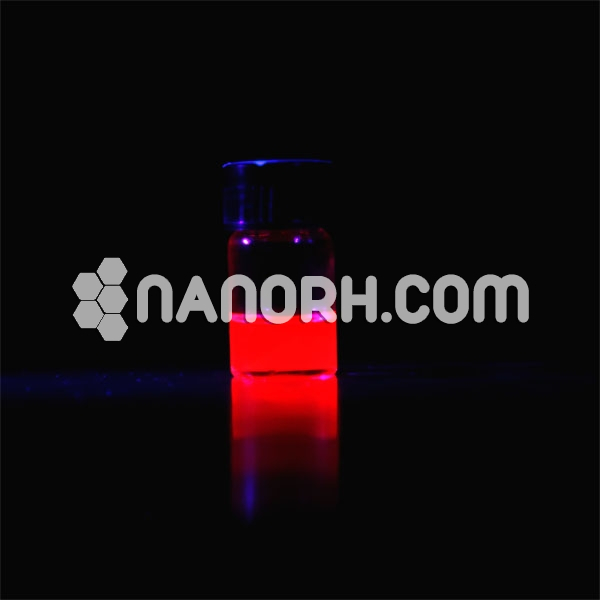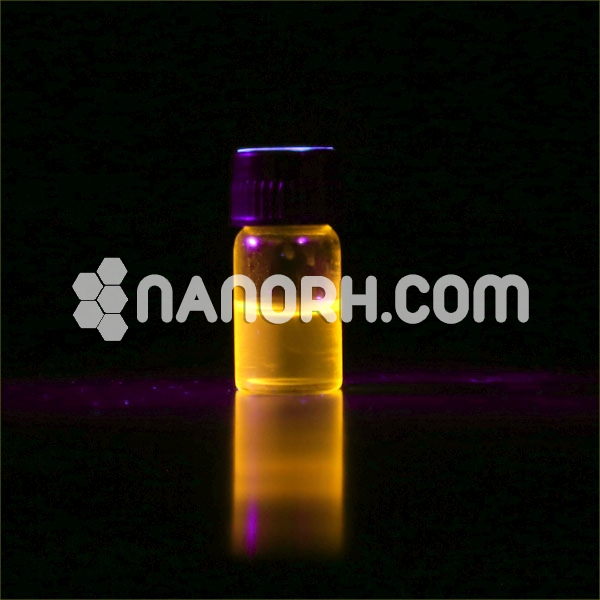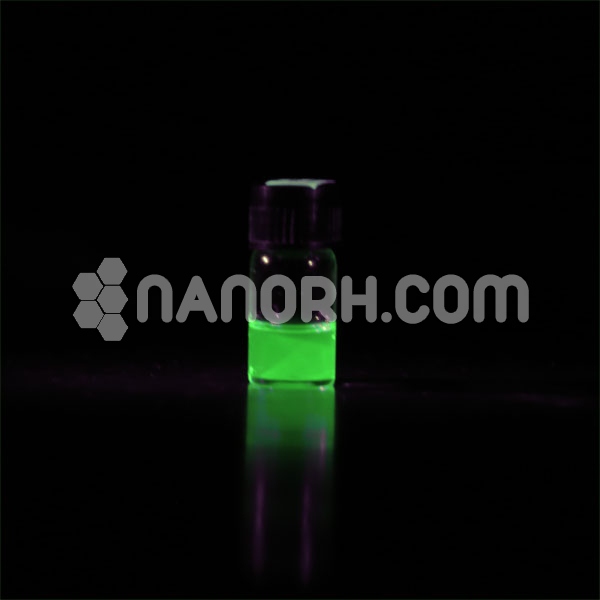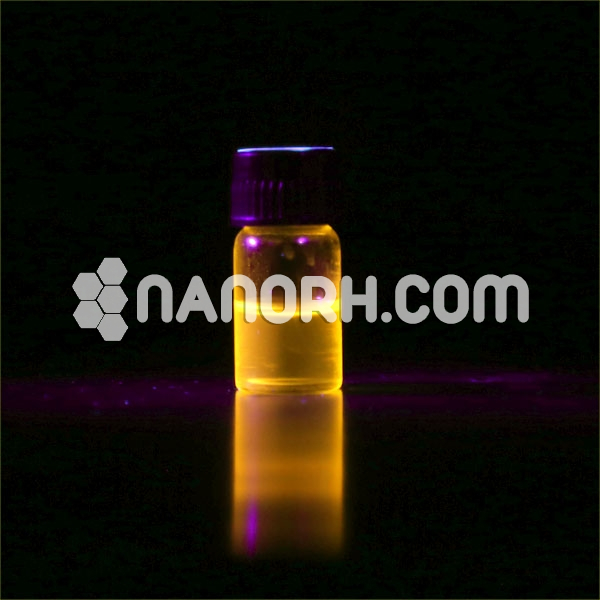CdTe core-type quantum dots COOH functionalized, fluorescence λem 770 nm, powder
Cadmium Telluride Quantum Dots (CdTe QDs) are available in solid form. They are coated with carboxyl groups which makes them water soluble to make aqueous solutions. These carboxyl functionalized hydrophilic quantum dots can be further conjugated for use as labels. CdTe QDs can be used for optical and display applications; solar cells and biomedical applications…
| CdTe core-type quantum dots COOH functionalized | |
| Product No | NRE-20006 |
| CAS No. | 1306-25-8 |
| Formula | CdTe |
| Diameter | 4-6 nm |
| Functional Group | -COOH |
| Fluorescence | λem 770±5nm |
| Molecular Weight | 240.01 g/mol |
| Color | red |
| Solubility | Water soluble |
| Storage Temperature | 2-8°C |
CdTe Quantum Dots/ CdTe core-type quantum dots COOH functionalized
Quantum dots (QDs) or Nanocrystals (NCs) of semiconductors have become interesting for both fundamental research and practical applications because of their high surface-to-volume ratio and the quantum confinement effect,
In the past decades, noteworthy advances have been made towards the synthesis of colloidal semiconductor QDs, particularly II-VI compounds, such as CdSe, CdS, and CdTe. These highly luminescent nanomaterials possess suitable characteristics for various applications in optoelectronics and biological labeling. Recently, with the development of gene technology and relying on the basic mechanism for antigen recognition by a specific antibody, along with the production of protons by ATP during the antigen-antibody reaction, semiconductor QDs have been stepped up in their application in the early-stage diagnostics of some viral diseases. Among II-VI semiconductor compounds, CdTe has attracted much interest because it is a direct gap material with a bandgap energy of 1.52 eV, which is suitable for emitting in the visible spectral range by controlling the size correspondingly with the quantum confinement of charge carriers. Moreover, compared to CdSe, it seems that one could produce CdTe QDs in the aqueous phase more easily. This sounds CdTe core-type quantum dots COOH functionalized very significant for bio-labeling applications, including the labeling of tumor cells, the sensing of drug delivery and the detection of residual pesticides. For fluorescence biolabeling using semiconductor QDs, one should classify clearly the different types corresponding to their sophisticated structure and sensitivity. The simplest is just to bind luminescent QDs on the surface or inside the cells (e.g. yeast cells) then observe their emission under a microscope. Specific labeling is much more complicated, where an antigen is specifically recognized by its corresponding antibody that has been attached to the luminescent QDs. The highest-sensitivity detection is realized by some biosensor structures in which one can measure the change in fluorescence intensity or electrochemical signal with the specific interaction of an antibody with an antigen. For the use of semiconductor QDs as fluorescent tags for biomedical applications, such as imaging, drug delivery, nanomedicine, and in vitro and in vivo biological labeling.




